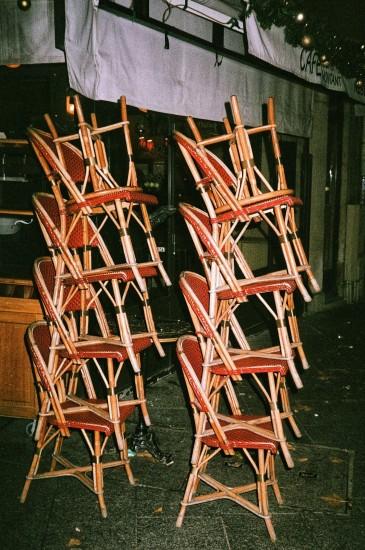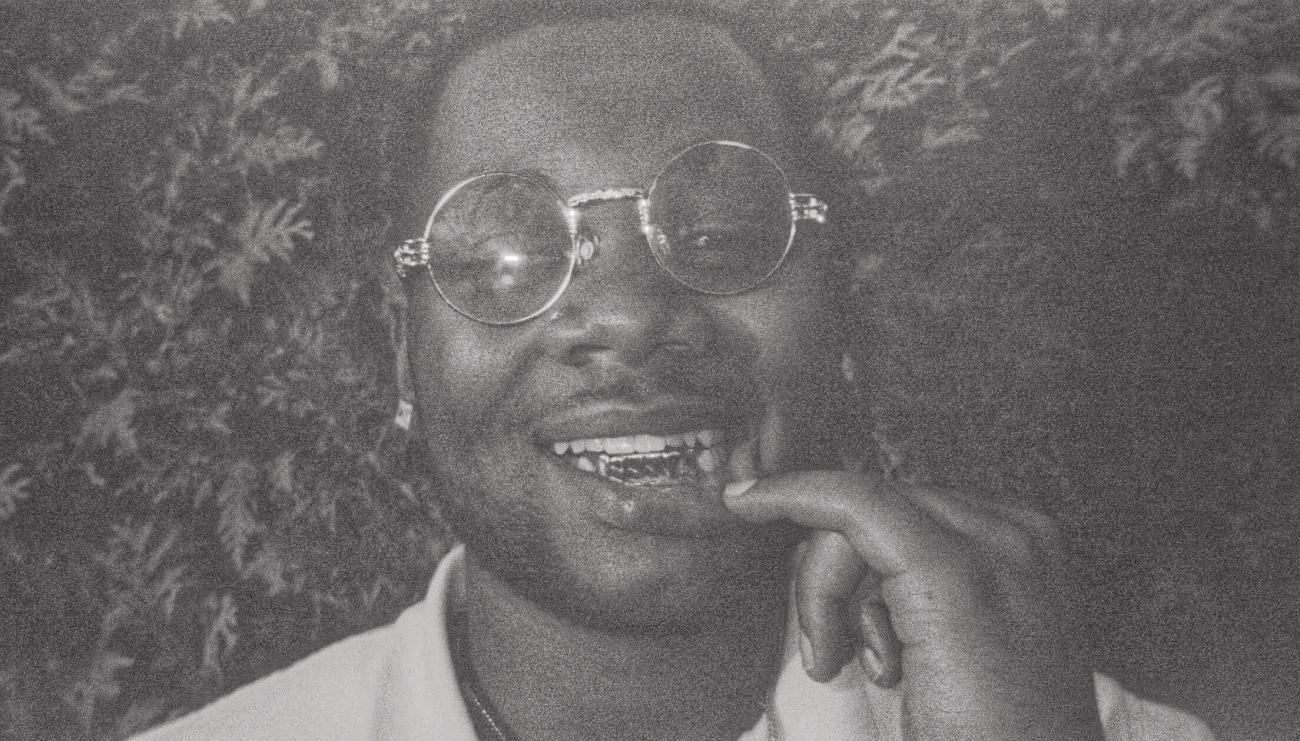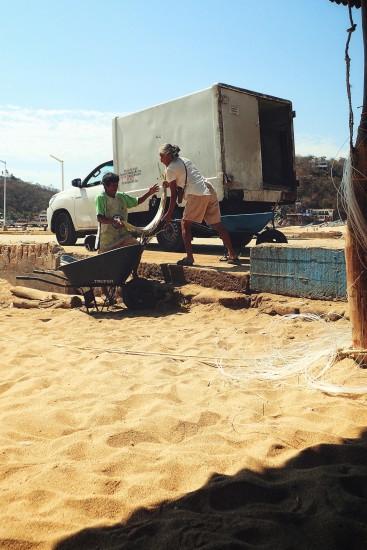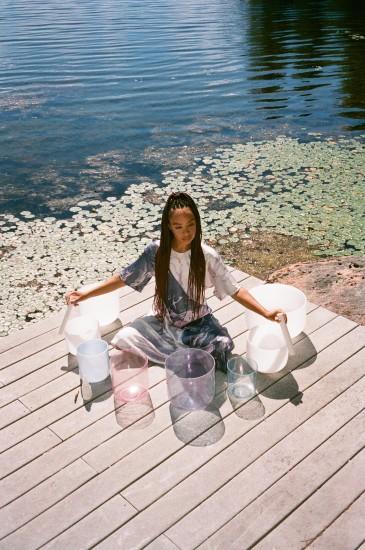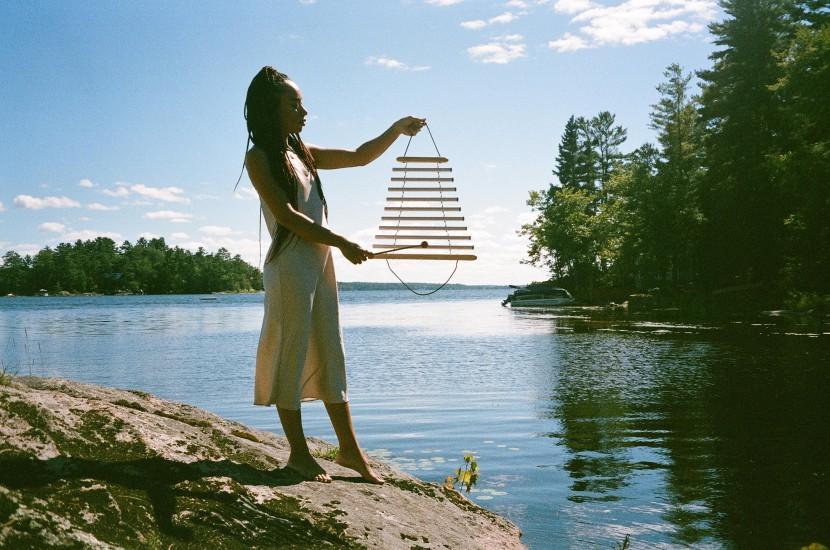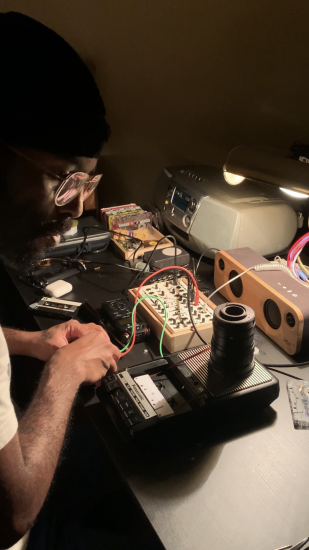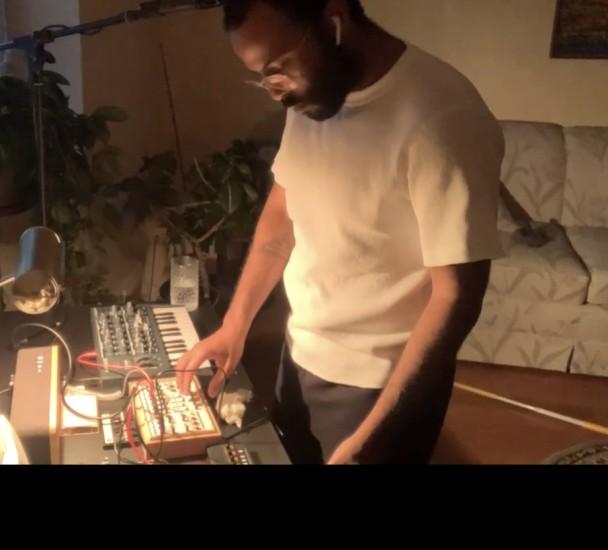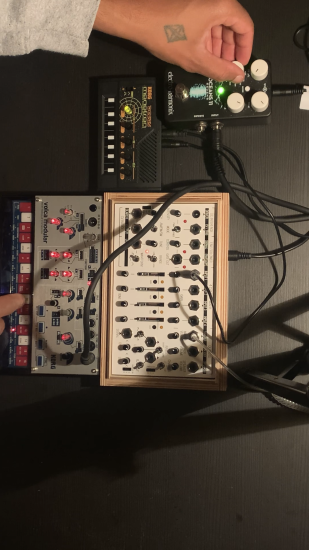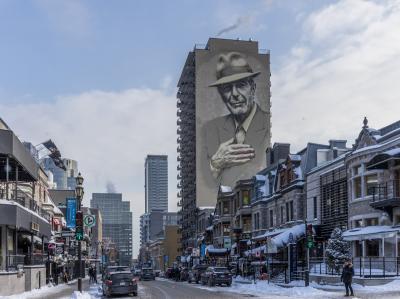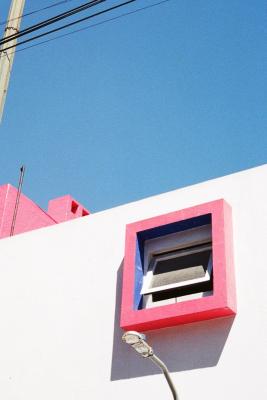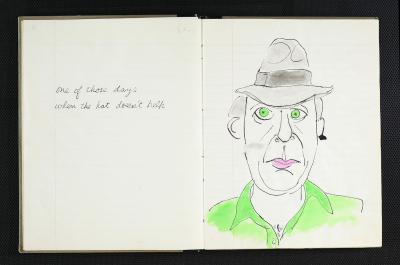Mediums outside music
Inspired by Leonard Cohen, three musicians speak about their multidisciplinary flair.
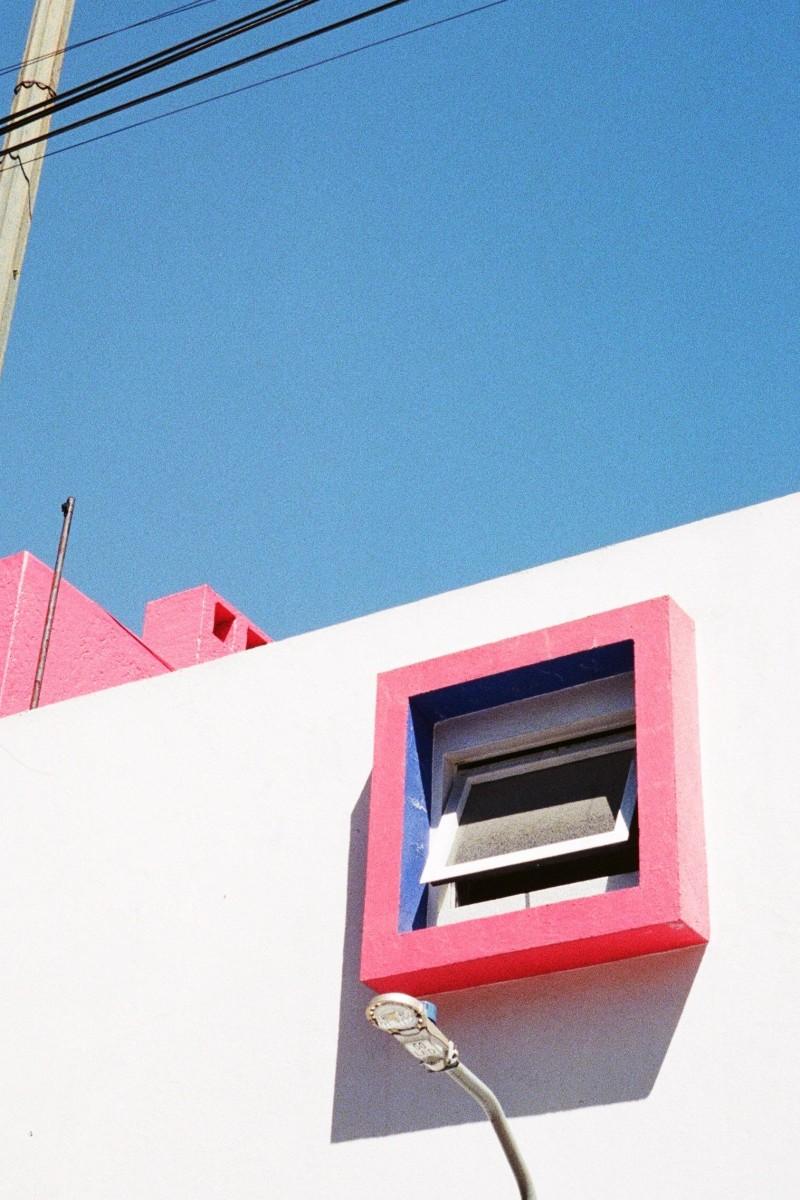
Image courtesy of Jahmal Padmore.
Most professional artists have built their careers and gained recognition by creating work in a single medium. While mastering more than one discipline is usually an impossible feat, it’s commonplace for artists to find inspiration and further develop their voice by dabbling in multiple creative endeavours. If you’ve had a chance to visit Leonard Cohen: Everybody Knows at the AGO, you’re aware that the legendary Canadian musician is no exception to this rule, having regularly expressed his creative prowess in a variety of mediums – from sketchbook doodles to instant photography.
Curious about the influence these other artistic interests may have had on Cohen’s music practice, we sat down with three Toronto-based musicians to ask what else they creatively dabble in and why. After talking about photography with singer/songwriter Jahmal Padmore, sound healing with R&B artist A l l i e, and field recording with R&B /ambient artist Brendan Philip, it’s clear that a career in music can be the culmination of a broad spectrum of art practices.
Below, we learn how their respective interests help sustain their creative appetites while building the inspiration necessary for the stage and recording studio.
Foyer: When did you first become interested in photography? When and why did you decide to adopt it as an art practice/hobby?
Padmore: Among all the creative mediums I engage in, photography was always the most beguiling yet approachable practice. I so badly wanted to undertake and understand it. In 2015, after recognizing I had just come out of a shroud of depression, I knew I needed to find creative outlets beyond music – where I could integrate my entire sense of self. I wanted, and required, something else to pour myself into that would remind me that art is a means of expressing my own understanding of this conception – and not meant to be a vehicle for social acceptance or just a quick down payment on a property.
My cousin Elysia had an older Nikon F55 collecting dust on her mantle. Committing to her I would make good use of the camera, I took it home and started training my YouTube algorithm to continuously feed me a stream of “How To” camera videos that have yet to abate. Having never used anything beyond a point-and-shoot camera, I dove into attempting to understand how aperture and ISO worked. And I found the practice deeply soothing. Long walks, taking pictures of empty pop cans thrown aside, slivers of light and reflections in puddles that all of the YouTube gurus had instructed me in. My partner at the time had recently graduated from the photography program at SVA. We shared conversations about photography, and as she allowed me into an understanding of her practice, she encouraged my passion and functioned as a fantastic educator.
I began to understand the imperative of creating images that reflected things I felt, not merely what I saw. Understanding that the ephemeral nature of all that is creative is transposed to a singular moment within the medium.
Foyer: What are some ways your work with photography lends to your music practice?
Padmore: Learning the hard way that creating images is less about what I could conjure but primarily a function of being open to the moments. Finding moments that reflected not just what you want to project of yourself and your environment but ones that genuinely portray an idea that existed only at that moment.
As long as I’ve sought to make things, I’ve tried to keep that top of mind. Even empty lyrics can have depth when framed in an honest way. Honesty to what existed at the time you made the work. Whether that’s a chord progression or colour. Photography really gives me that moment. In higher doses than even music will allow. From acting to cooking, as I continue to learn more and attempt to improve my understanding of how to create things that make me aware of questions I’m asking, I’m going to continue to lean on photography to give me that constant rush and immediacy of creation.
Foyer: When did you first become interested in sound healing? When and why did you decide to adopt it as an art practice/hobby?
Allie: I first became interested in sound healing back in 2018 when I was in California. I visited the Integratron in the Yucca Valley, which is an amazing structure built specifically for sound baths. The Integratron creator, George Van Tassel, claimed that he built it based on instructions from extraterrestrials and the writings of Nikola Tesla. I had an incredible sound bath experience there that illuminated how powerful sound healing can be on a personal level. In 2020, I finally purchased my first quartz singing bowls and began my personal practice. I found the modality to be so healing during the pandemic that I went on to become a certified practitioner through the Institute of Traditional Medicine in 2022.
Foyer: What are some ways your work with sound healing lends to your music practice?
Allie: Music has always been a form of meditation to me, and my sound healing practice has really helped further connect me to the raw power of certain frequencies. In a sense, there's really no separation between my sound healing practice and my music practice. They're both about what feels good to the ear and the body and trusting that inner knowing. They both inform each other, and the more I deepen my relationship with both, the more they meld, shapeshift and reveal what a powerful force of primordial healing sound is in each and every form it takes.
Foyer: When did you first become interested in field recording? When and why did you decide to adopt it as an art practice/hobby?
Philip: I became interested in field recording around 10 years ago when I became fascinated with Brian Eno and ambient music. Although Eno isn’t known for field recording per se, he is a North Star for me in raising awareness of music and sound being impressionistic and sensorial and less literal. So once I started to pull on the thread on Eno, there was a whole other world exposed, leading me to Musique Concrete which aligned well with my original love of samples in rap music, only this was pointing at the fact that you can sample any and everything.
It wasn’t until the pandemic hit, did I feel like I really had the room and encouragement to pursue this kind of creativity. The main reason why I think this direction appealed to me was that I just didn't feel like I had anything to say. I was just feeling like I was beginning to want to entertain the idea of a “post-language” and a “post-postness” which caused me to start to dream up a new world. I began to move away from using my computer into working with mediums like cassette players, record players and samplers and now viewing them as instruments rather than just for playback.
Foyer: What are some ways your work with field recording lends to your music practice?
Philip: The major benefit of this direction is bringing me back to playing and playfulness as central to my music practice. Playing is something we are told to abandon once childhood is over. I think it's clear people don't actually grow up truly, so this logic of replacing playing with logic and rigidity doesn't make too much sense. Playing doesn’t mean you don’t take it seriously; it's just a reaffirming that you care and love what you’re doing while not being too indulgent or overly controlling about what that work ultimately becomes.
I feel another quality this direction is helping me to clarify in myself better is discernment. It’s not lost on me that this sort of music begs many questions like “What’s the point?” or “What does this even mean?”; questions that I asked even while still feeling curious about this form. But once I started to explore the various processes of setting up my equipment, or tape loops or foraging around my environment and the internet for things to sample, I started to tap into this idea of the “medium being the message.” The more I listened to field recordings of a road trip or the most repetitive or meandering compositions I found myself tapping into an instinct. So now, when I am working with other artists on writing and production, it’s become easier to find the freedom to look at all attempts as valid while also employing a sense of editing or instinct about how and when to use those results. My approach to using field recordings just lets me stay mostly in the moment because of the opportunity I get to really listen, which is key when it comes time to make things you want others to hear.
Check out the music of Jahmal Padmore, A l l i e and Brendan Philip.
